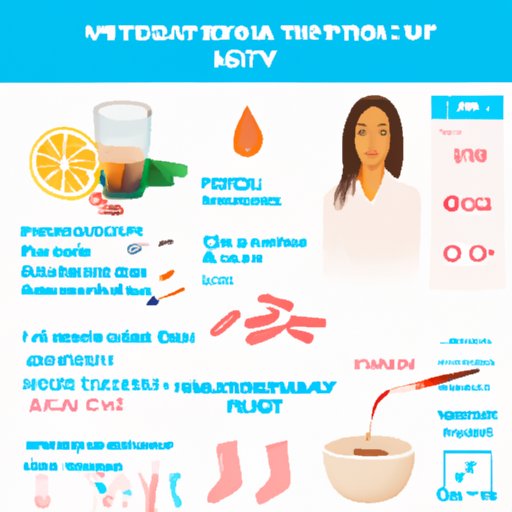Introduction
A urinary tract infection (UTI) is an infection that can affect any part of the urinary system, including the kidneys, bladder, urethra, and ureters. Although UTIs can occur in both men and women, they are more common in women due to their anatomy. UTIs can cause painful and uncomfortable symptoms, so it’s important to understand how to prevent them and when to seek medical care.
Understanding the Symptoms and Causes of UTI in Women
Common symptoms of UTIs include pain or burning sensation during urination, frequent urination, urgency to urinate, cloudy or foul-smelling urine, and pelvic pain. If left untreated, a UTI can spread to the kidneys, which can lead to more serious complications.
Some factors that increase a woman’s risk of developing a UTI include pregnancy, sexual activity, menopause, use of birth control, and certain types of clothing.

Prevention Tips to Avoid Getting a UTI
Fortunately, there are some simple steps that women can take to reduce their risk of getting a UTI. These include:
- Practicing proper hygiene habits, such as wiping front to back after using the bathroom and washing the genital area with warm water.
- Wearing loose cotton clothing instead of tight synthetic materials.
- Drinking plenty of water to help flush out bacteria from the urinary tract.

Natural Remedies for Treating UTIs
In addition to conventional treatments, there are also some natural remedies that may help treat UTIs. These include:
- Cranberry juice, which has been shown to prevent bacteria from sticking to the walls of the urinary tract.
- Probiotics, which can help restore the natural balance of bacteria in the gut.
- Garlic, which has antimicrobial properties that may help fight off the bacteria causing the infection.

The Role of Antibiotics in Treating UTIs
Antibiotics are often used to treat UTIs, but they should only be used when prescribed by a doctor. Antibiotics work by killing the bacteria that is causing the infection. There are several different types of antibiotics that can be used to treat UTIs, such as amoxicillin, ciprofloxacin, nitrofurantoin, and trimethoprim-sulfamethoxazole.
Diet and Lifestyle Changes to Reduce Risk of UTIs
Making some simple changes to your diet and lifestyle can also help reduce your risk of getting a UTI. These include:
- Eating foods high in vitamin C, such as citrus fruits, bell peppers, and broccoli.
- Limiting your intake of sugar, alcohol, and caffeine, which can irritate the bladder.
- Exercising regularly, which can help strengthen the muscles of the pelvic floor and reduce the risk of UTIs.
Home Testing Kits for Detecting UTIs
Home testing kits are available that allow you to test for UTIs in the comfort of your own home. These kits typically involve collecting a urine sample and then testing it for the presence of bacteria or white blood cells. While these kits can be convenient, they are not always accurate and should not be used to diagnose or treat a UTI.

When to See a Doctor for UTI Treatment
If home remedies and over-the-counter medications don’t provide relief from UTI symptoms, it’s important to see a doctor. A doctor can prescribe antibiotics to treat the infection, as well as recommend lifestyle changes to reduce the risk of future UTIs.
It is also important to seek medical attention if your symptoms worsen or if you experience fever, nausea, vomiting, or back pain. These could be signs of a more serious condition, such as a kidney infection.
Conclusion
Urinary tract infections are common in women, but they can be prevented and treated with the right knowledge and care. By understanding the symptoms, causes, and treatments, women can take steps to reduce their risk of getting a UTI and seek medical care if necessary.
(Note: Is this article not meeting your expectations? Do you have knowledge or insights to share? Unlock new opportunities and expand your reach by joining our authors team. Click Registration to join us and share your expertise with our readers.)
